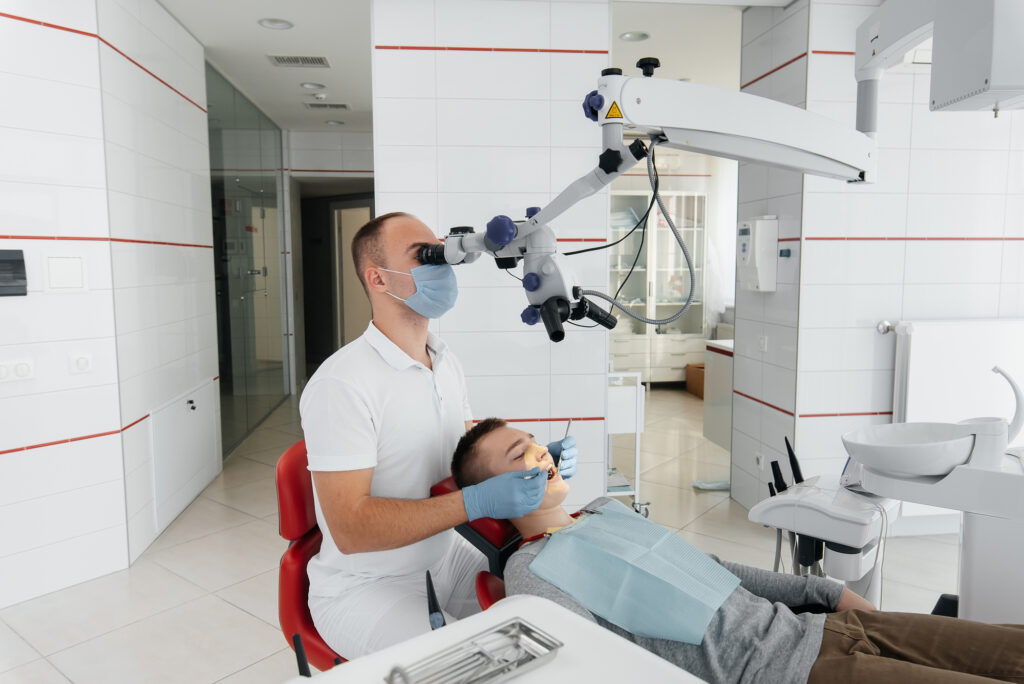
When it comes to our health, the divide between medical and dental care has been a long-standing issue. While medical professionals treat everything from head to toe, dentists are limited to oral health only. This divide has raised questions about its ethical implications. Is it fair that we prioritize one aspect of our health over the other? In this blog post, we’ll explore the history of the medical and dental divide, its current state, ethical considerations, and potential solutions for bridging this gap. So let’s dive in!
The history of the medical and dental divide
The medical and dental divide has been present for centuries. In the middle ages, barbers who provided haircuts also performed tooth extractions and other oral procedures. It wasn’t until 1723 that French surgeon Pierre Fauchard established dentistry as a separate profession.
In the late 19th century, advances in anesthesia made it possible for patients to undergo more complex dental procedures without pain. This led to the development of specialized tools and techniques unique to dentistry.
Despite these advancements, there remained a clear separation between medicine and dentistry. Medical schools taught little about oral health, while dental schools focused solely on dental care.
Today, this divide continues to persist despite increasing evidence linking oral health with overall well-being. While doctors may refer patients to a dentist for certain conditions such as gum disease or oral cancer, many people still see their oral health as separate from their overall health.
The current state of the medical and dental divide
The current state of the medical and dental divide is a complex issue that has been present for decades. The separation between these two branches of healthcare dates back to the early 20th century when dentistry was not yet considered a part of mainstream medicine. Today, while there have been some improvements in bridging this gap, there are still significant disparities between medical and dental care.
One important factor contributing to the divide is insurance coverage. Medical insurance often covers a wider range of services than dental insurance does, leading many people to prioritise their medical needs over their dental health. Additionally, access to affordable dental care can be limited for low-income individuals or those living in rural areas.
Another challenge facing dentists today is the fear associated with getting a dental filling or undergoing other procedures. This anxiety can lead patients to avoid seeking treatment altogether, further exacerbating issues with oral health.
However, social media platforms like Instagram and Facebook have helped bridge this gap by allowing dentists to connect with patients on a more personal level. By sharing educational content and behind-the-scenes glimpses into their practice, dentists are able to break down barriers and build trust with potential patients.
While progress has been made in recent years towards closing the medical and dental divide, there is much work still left to do in ensuring that everyone has equal access to quality healthcare regardless of whether it falls under “medical” or “dental.”
The ethical considerations of the medical and dental divide
When discussing the medical and dental divide, it’s important to take ethical considerations into account. One of the main concerns is access to care – while medical services are typically covered by insurance or government programs, dental care often falls outside these systems.
This means that those who can’t afford regular visits to the dentist may suffer from preventable oral health issues that could become more severe over time. Additionally, some dentists may prioritize cosmetic procedures over necessary treatments in order to make a profit.
Another ethical concern is education – many people simply don’t understand the importance of oral health and how it can affect their overall wellbeing. Dentists have a responsibility not only to treat patients but also to educate them on how to maintain good oral hygiene habits.
There is the issue of trust between healthcare providers and patients. Patients need assurance that they are receiving appropriate treatment for their needs rather than unnecessary procedures designed solely for financial gain.
Addressing these ethical concerns will be crucial in bridging the gap between medical and dental care and ensuring access for all who need it.
Solutions to the medical and dental divide
The medical and dental divide has been a persistent issue for years, but there are solutions that can help bridge the gap between these two fields. One solution is to increase collaboration between dentists and physicians through interdisciplinary training programs.
These programs would allow both dentists and physicians to learn from each other’s expertise, leading to more integrated patient care. Another solution is to expand access to dental services in underserved areas by bringing mobile clinics or telemedicine technologies into communities where they may not have convenient access to oral health care.
Moreover, social media helps dentists reach out to individuals who may be hesitant about getting a dental filling or undergoing other procedures. By sharing informative resources on oral health topics, answering frequently asked questions, and posting educational videos showcasing their work, dentists can build trust with potential patients.
In addition, policymakers could also consider implementing policies that integrate oral health into primary care practice. This would require collaboration across sectors of healthcare delivery systems as well as support from public health advocates in order for it all come together successfully.
These solutions show promise in bridging the medical and dental divide while improving overall healthcare outcomes for patients.
Conclusion
The medical and dental divide is a complex issue that has been present for centuries. While some progress has been made in recent years to bring about greater collaboration between medical and dental professionals, there is still much work to be done.
The ethical considerations of this divide cannot be ignored as they directly impact patient outcomes. Patients should not have to choose between getting the care they need for their physical health or their oral health.
It’s time for healthcare systems and policymakers to recognize the importance of oral health in overall wellness and take steps towards integrating dentistry with medicine. By doing so, patients will receive comprehensive care that addresses all aspects of their health.
Dentists can also play a role by leveraging social media platforms like Twitter and Facebook to educate patients on the importance of oral health and promote preventive measures such as regular check-ups, cleanings, and getting a dental filling when necessary.
Ultimately, bridging the medical and dental divide requires a collaborative effort from all stakeholders involved. Only then can we ensure that patients receive high-quality care that addresses both their physical and oral health needs.

